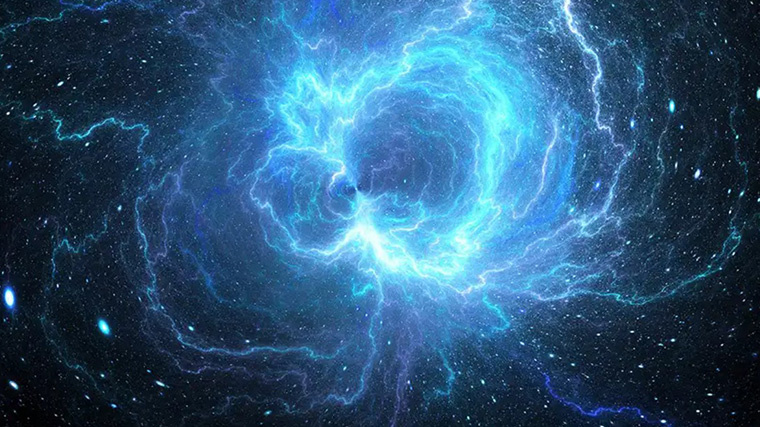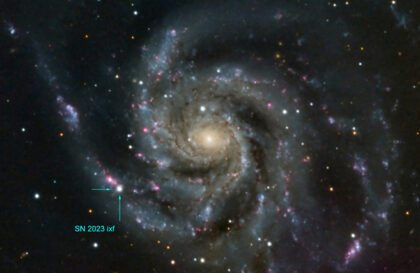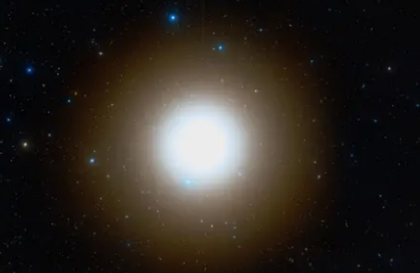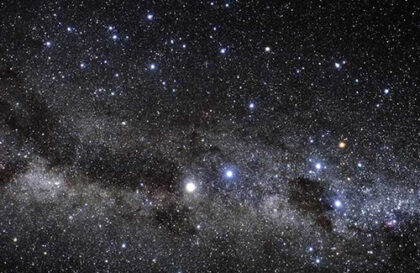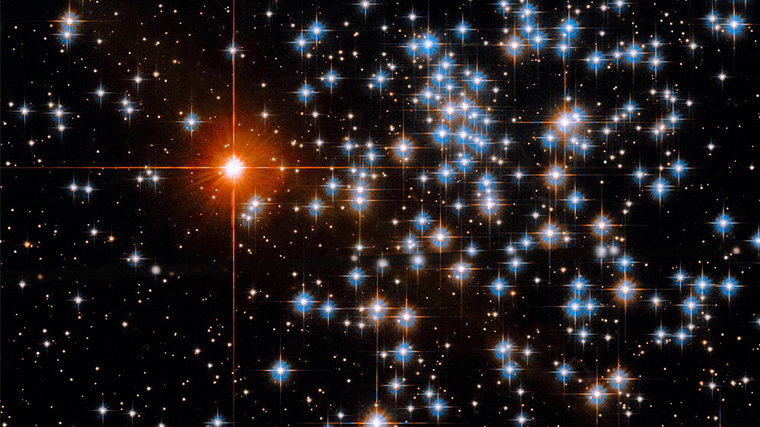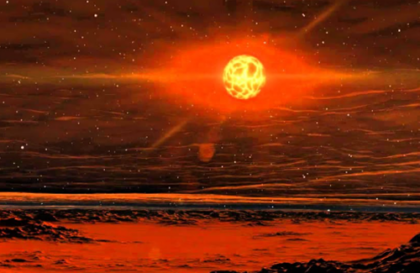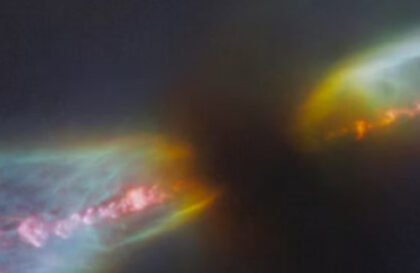For every particle emerging from nothingness in the seething ocean of quantum foam, an antimatter particle with the opposite charge must appear.
However, having met, these particles will disappear again, leaving behind only a cloud of radiation.
Judging by how much matter surrounds us, 13.8 billion years ago, for some reason, a lot of matter was not destroyed. Either for some reason a large amount of antimatter did not appear, or it hid somewhere or disappeared before it had time to mutually annihilate from the Universe full of matter.
This is one of the mysteries over which physicists are struggling hard.
The LHCb detector, one of four detectors at the Large Hadron Collider, is designed to answer the question of why the observable universe is composed of ordinary matter, and not of antimatter and matter equally.
What does an antistar look like?
In the endless night sky, such a unique star may be hidden, which consists of antimatter, but for an observer from Earth, it will look like an ordinary sparkling ball of gas. In this highly unusual spectacle, the only clues to its unusual nature may be characteristic flashes of gamma rays. These flares result from the annihilation of the star’s antihydrogen atoms with the rare scraps of ordinary matter that fall into it.
At the beginning of this year, astronomers shared the results of their observations aimed at identifying such characteristic gamma-ray flashes. After careful analysis and the exclusion of other factors, they came up with a list of 14 potential anti-stars. However, this does not mean that more than a dozen stars created from antimatter really live in our Galaxy. These phenomena may also be related to other known sources of gamma rays such as pulsars or black holes.
However, if antistars do exist, then such periodic bursts of gamma rays are likely to be their signature. Despite this, the likelihood that such stars actually exist remains extremely low.
Scientists are seriously interested in the antistar
The emergence of scientific interest in the study of antiparticles and their sources is associated with unusual detections made in 2018 using the AMS-02 cosmic ray detector installed on board the International Space Station (ISS). During the observations, signals similar to antihelium nuclei were registered. This unexpected result prompted scientists to deeply investigate the nature of antiparticles and possible sources of their formation.
Based on these observations, the idea arose that antihelium, if it really is helium, can enter space from antistars. This hypothesis suggests that antistars may contain helium antiparticles, and in the course of their development they eject them into interstellar space. Ordinary stars contain 25% helium in their composition and, during their life cycle, spray a significant part of their mass into the surrounding space. If antistars spray antiparticles in a similar way, then the emergence of antihelium finds its justification.
There are other possible sources of antiparticles. For example, scientists can produce antiparticles, including antihelium, in the laboratory using particle accelerators such as the Large Hadron Collider (LHC). In addition, some cosmic objects, such as neutron stars and supermassive black holes, are capable of accelerating particles to extremely high energies, which can lead to the formation of antiparticles.
Examples of antiparticles
Particles and antiparticles are elementary particles that have opposite charges of electricity.
For example:
- Electron (e-) – Positron (e+):
An electron is an elementary particle with a negative charge. The positron is its antiparticle, which has a positive charge. When an electron and a positron collide, they can annihilate each other, turning into photons.
- Proton (p+) – Antiproton (pbar):
Proton is the main particle that makes up the nucleus of the hydrogen atom and other elements. An antiproton is its antiparticle with the opposite charge.
- Neutron (n) – Antineutron (nbar):
Neutron is a neutral elementary particle, which is also a part of atomic nuclei. Antineutron is the antiparticle of the neutron.
- Muon (μ-) – Antimuon (μ+):
A muon is an elementary particle similar to an electron, but more massive. The antimuon is its antiparticle.
- Neutrino (ν) – Antineutrino (νbar):
Neutrino is a neutral light particle, usually produced by radioactive decays. Antineutrino is the antiparticle of the neutrino.
- Top-type quark (u) – Top-type antiquark (ubar):
Quarks are the fundamental particles that make up protons and neutrons. The top quark has a positive charge. An up-type antiquark is the antiparticle of this quark with a negative charge.
Image credit:
https://www.newscientist.com
https://home.cern
